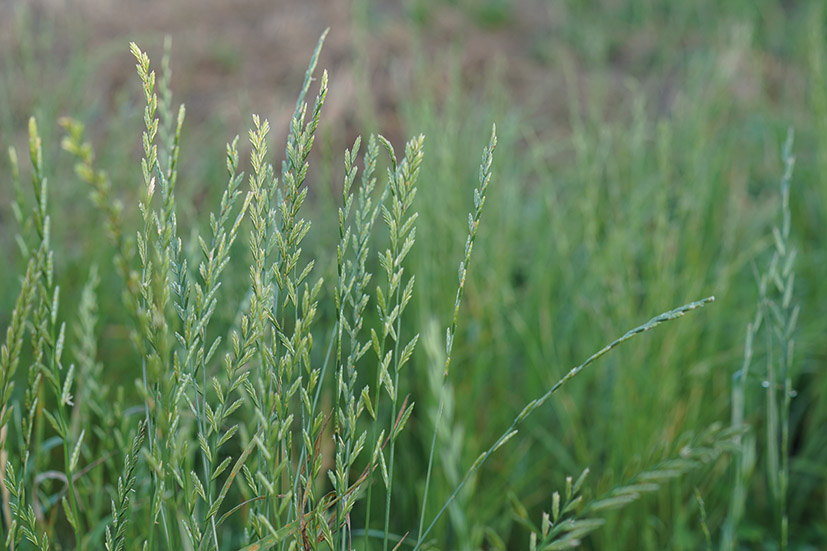Ryegrass: More troublesome than black-grass?
25th August 2022
ProCam agronomist Jonathan Guy advises farms across South Yorkshire. Both black-grass and Italian ryegrass cause problems in his area, but on balance, ryegrass is more troublesome to control, he reckons.
“A lot of ryegrass seems to be nigh on impossible to control in a cereal crop. Spring cropping is very effective against high black-grass populations, but often not for ryegrass. It can still germinate and produce a large infestation in a spring barley crop,” comments Mr Guy.
“Over the last few years, I have had resistance tests done on some difficult to control ryegrass across the county. Most samples came back showing RRR resistance ratings for contact-acting herbicides, and resistance to residual chemistry flufenacet and prosulfocarb too. This meant I had to look at something else to get good pre-em control of ryegrass. Darren Adkins of Bayer suggested using Proclus (aclonifen) in the mix with Liberator (flufenacet + diflufenican) which had given good results on ryegrass in other parts of the country.
“Autumn 2021 was my first year using Proclus. The results overall have been good and it has certainly helped control ryegrass, but seedbed quality has also been really important in order to get the benefit. The ryegrass has to grow through a layer of aclonifen on the soil surface which means the ground needs to be even, without lots of clods and consolidated for maximum product efficacy.
“Another thing to watch is heavy rainfall just after application. In general, I would say you have to be more careful than just using Liberator. Proclus is pre-em only, so the sprayer needs to be chasing the roller after the drill so that it is applied at the right time.”
Good results
So far, Mr Guy has not used Proclus against black-grass because cultural controls and existing autumn stacks and sequences are still working well. “I haven’t used it for this, but I know of people getting good results with it,” he explains.
“For grassweeds, it is cultural control first and out of the can last. Spring cropping and delayed drilling work for black-grass. To deal with ryegrass, I recommend paying attention to the stale seedbed. Create a stale seedbed as if you were sowing a grass ley, use a roller to consolidate and promote maximum germination before drilling.
“It all works well in theory, but moisture levels can be a problem. Dry Septembers seem to be quite common, which means you must wait until rain for germination; however, once it starts raining in late September/early October, drilling starts and ryegrass ends up emerging with the crop – this is where the advice and the practicality break down. There’s no simple answer. Know what resistance levels you are dealing with, but have a back-up plan, to accommodate whatever the weather throws at you.”
Brome becoming more common
In the South West, Agrovista agronomist Peter Waltham advises farmers against a range of weeds. “Black-grass is the main grassweed problem, but sterile brome, wild oats and ryegrass cause difficulties too. Brome in particular, seems to be becoming a bit more common as direct drilling and no-till increase in popularity,” he comments.
“When it comes to broad-leaf weeds, we see everything and anything. On the brashier clay soils, charlock, hemlock and cleavers are the main weeds. Poppies and cranesbill tend to cause more problems on the chalky soils in Wiltshire.”
In wheat crops, black-grass control is based on robust cultural controls and autumn chemistry. “We prefer to use residual type chemistry because the control is more consistent with fewer resistance problems than post-ems,” Mr Waltham continues.
Last season, the standard pre-em has been Liberator + Proclus which is now in its second season. “I first saw it at Agrovista’s Lamport site. You could see an improvement in control compared to other products, so I was keen to use it. So far it is working well, and farmers have generally been happy about the results.”
He also recognises the importance of using various modes of action in the programme. Many of his customers use Avadex (tri-allate), and he also recommends Octavian (flufenacet + diflufenican + metribuzin) for autumn top ups which brings metribuzin into play.
Mr Waltham has decided to take a field-by-field approach to managing crops to solve a specific problem field rather than a farm-wide approach. This is particularly important when deciding how to manage land in those critical weeks between harvest and drilling.
“A lot depends on what weeds you have. Black-grass and sterile brome tend to respond to very light cultivation such as a straw rake to encourage a chit to spray off. Wild oats are probably best left on the surface, burying means they’ll cause problems later on.
“It’s all about a tailored approach. The most important thing is to ask what are you trying to achieve and how are you going to do it. This will be different depending on the field, following crop and so on. I am expecting a higher number of second wheats this season, which isn’t a problem for weed control, but these fields are best drilled later.”

